 The alpaca is a mammal of the camelid family. It is just a little bigger than a sheep and weighs between 50 and 80 kg, for a height ranging from 75 cm to 1 m high. Its head is short, its ears are pointed, and its mouth is forked and split.
The alpaca is a mammal of the camelid family. It is just a little bigger than a sheep and weighs between 50 and 80 kg, for a height ranging from 75 cm to 1 m high. Its head is short, its ears are pointed, and its mouth is forked and split.
There are up to 22 different natural colours of wool, and the appearance of its coat varies according to the type of alpaca. For example, the Huacaya type has a medium-long, curly coat, while the Suri type has a long, straight coat.
Easy animals Alpacas are easy animals to keep. They prefer to eat grass and hay. Also, alpacas do not require much space. Nevertheless, it is advisable to keep two animals, but preferably more, as alpacas are real herd animals. They use a lot of body language to communicate with each other and only make a whinnying sound in case of danger. Unlike the llama, alpacas will not spit easily. Basically, they only do this to each other when they are eating or frolicking. Even after the birth of a foal, a mare may defend her young by spitting if one wants to touch the young. And if they have already been mated, mares will spit at the stallion as well. Alpacas, however, will never spit at people specifically. With some practice, alpacas can even be made halter-proof.
Alpacas’ calm and friendly nature, along with their distinctive appearance, has led them to become unlikely stars beyond the fields and farms. In recent years, their charm has caught the eye of online game developers, inspiring a series of alpaca-themed casino games. These games capitalize on the alpaca’s appealing image, creating a fun and engaging online gambling experience that stands out in a crowded marketplace. For more on this fascinating transition from grazing grass to gracing screens, learn how alpacas became iGaming stars to explore their journey into gambling platforms.

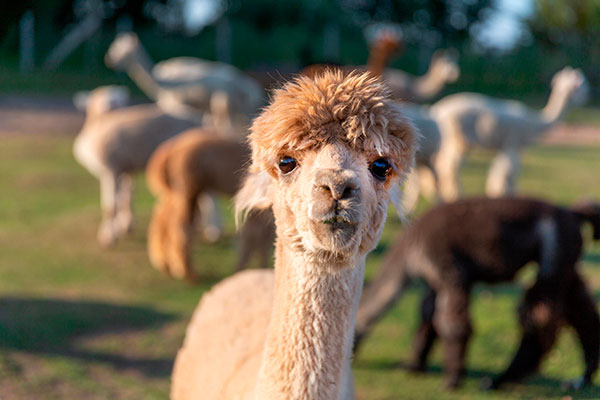

Where does Alpaca live?
| 🦙 Country | 🦙 Population | 🦙 % of Total |
|---|---|---|
| Peru | 3 598 000 | 79.36% |
| Bolivia | 500 000 | 11.03% |
| Australia | 200 000 | 4.41% |
| United States | 53 000 | 1.17% |
| United Kingdom | 45 000 | 0.99% |
| Chile | 45 000 | 0.99% |
| Canada | 28 500 | 0.63% |
| New Zealand | 26 000 | 0.57% |
| Asia (multiple countries) | 19 000 | 0.42% |
| Ecuador | 4 000 | 0.09% |
| Other | 15 000 | 0.33% |
In the wild, the alpaca lives in South America, all along the Andes Mountains, in Argentina, Bolivia, Chile, Ecuador and Peru. However, it is now bred in several other countries such as England, Switzerland, Australia, the United States and Canada.

Alpaca is not a llama!
Do not call alpacas a llama, minilama or dwarf llama! Like the llama, they belong to the camel family. But they are very different kinds of animals. For example, they hardly spit, can’t carry a load, and are unprecedentedly friendly and gentle. In addition, the soft soles of their feet hardly damage the grass in the pasture. That’s something else than the ploughing of a pony, pig or goat!
Alpacas’ life in community
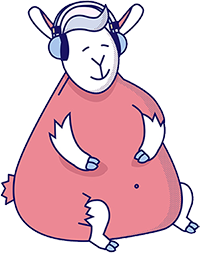 A gregarious animal, its behaviour is based on the social structure of the herd, and it becomes irritating when it does not mix with its fellow creatures. The alpaca lives in a group composed of a dominant males, females and young. All the other males are separate. If they covet the same female, the rivalry is often settled by a kick but can also degenerate into brutal battles with bites and head-butting. Alpacas communicate with each other through postures and particular vocalizations, and like the llama, they spit to signify their displeasure.
A gregarious animal, its behaviour is based on the social structure of the herd, and it becomes irritating when it does not mix with its fellow creatures. The alpaca lives in a group composed of a dominant males, females and young. All the other males are separate. If they covet the same female, the rivalry is often settled by a kick but can also degenerate into brutal battles with bites and head-butting. Alpacas communicate with each other through postures and particular vocalizations, and like the llama, they spit to signify their displeasure.
The alpaca, close to the man
First raised by the Incas about 5000 years ago, the alpaca is not a wild animal. This curious and friendly camelid appreciates the man’s company by whom it is nowadays domesticated mainly for its high quality wool. The mammal is very sociable and intelligent and is also used as a pet because it knows how to be very gentle with children. Its docility and it’s very sure footedness make it a pleasant hiking companion.
Alpaca farms in Canada
 The alpaca falls under the so-called park animals, just like deer, ratites and wallabies. But in contrast to the shy nature of other park animals, alpacas are extremely curious and very interested in people. Just sit casually in the alpaca pasture, fiddling; chances are your alpacas will be looking over your shoulder in no time. This is why they are increasingly popular residents of petting zoos and care farms. And as a pet for yourself, of course!
The alpaca falls under the so-called park animals, just like deer, ratites and wallabies. But in contrast to the shy nature of other park animals, alpacas are extremely curious and very interested in people. Just sit casually in the alpaca pasture, fiddling; chances are your alpacas will be looking over your shoulder in no time. This is why they are increasingly popular residents of petting zoos and care farms. And as a pet for yourself, of course!
Here are the most famous alpaca farms in Canada from different regions:
- Split Rock Farms – 1652 Ridge Rd N, Ridgeway, Ontario
- Hickory Lane Alpacas – 7326 County Rd 9, Napanee, Ontario
- Les Alpagas de Willow Lane – 44 Québec Rte 148, Bristol, Quebec
- Kickin’ Back Alpaca Ranch – 734762 W Back Line, Markdale, Ontario
- Kensington Prairie Farm Ltd. – 1736 248 St, Aldergrove, British Columbia
- SAMY’S Alpaca Farm – 2432 Cuddy Dr, Kerwood, Ontario
- Alpagas Sutton – 1474 Chem. Macey, Sutton, Quebec
- Harmony Meadows Alpacas – 6185 Sixth Line, Belwood, Ontario
- Meadowview Alpaca Farm – 908 Carter Side Rd, Bruce Mines, Ontario
- Old Mill Alpacas – 13557 Little Lake Rd, Colborne, Ontario
- Mamies Alpaca Farm – 84 Maceachern Rd, West Bay Road, Nova Scotia
- HighTales Alpaca Farm – 949 Portage Vale Rd, Portage Vale, New Brunswick
- Jock river alpaca & llama farm – 79 Fortune St, Richmond, Ontario
- Alpaca Springs Farm – Linda and Harold Beatty, 241 Chiswick Line, Powassan, Ontario
- Arriba Linea Alpacas – 696 Kawartha Lakes County Rd 36, Lindsay, Ontario
- Albert Bridge Alpacas – 173 Hillside Rd, Albert Bridge, Nova Scotia
- Alpacas Belarroyo – 9701 Rang de la Fresnière, Mirabel, Quebec
- Oak Hills Alpacas – 533 Gallivan Rd, Stirling, Ontario
- Salem Alpacas – 363 Salem Rd, Manilla, Ontario
- Ferme Bel Alpaga – 1331 2e Rang, Saint-Bonaventure, Quebec
- Thede Acres Alpacas – 1611 BRUCE ROAD 15 RR1, Tiverton, Ontario
- Forget-Me-Not Alpacas – 1595 Concession Rd 3, Beaverton, Ontario
- Camelot Haven Alpacas – Vernon, BC 1P9, 6841 Raven Rd, Vernon, British Columbia
- Sunkeya Farm Alpacas – 1264 Green Lake Rd, Oliver, British Columbia
Alpaca’s wool is one of the softest and most luxurious
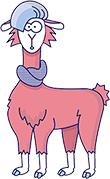 Alpaca is known worldwide for the quality of its fleece, which is renowned for its softness, fineness, thermal efficiency (warmer than sheep), comfort (including breathability) and its many natural colours (officially 22 shades in Canada, but more than 250 possible colours!).
Alpaca is known worldwide for the quality of its fleece, which is renowned for its softness, fineness, thermal efficiency (warmer than sheep), comfort (including breathability) and its many natural colours (officially 22 shades in Canada, but more than 250 possible colours!).
Unlike sheep’s wool, alpaca fibre represents a much smaller percentage of the fibres produced worldwide, making it more valuable.

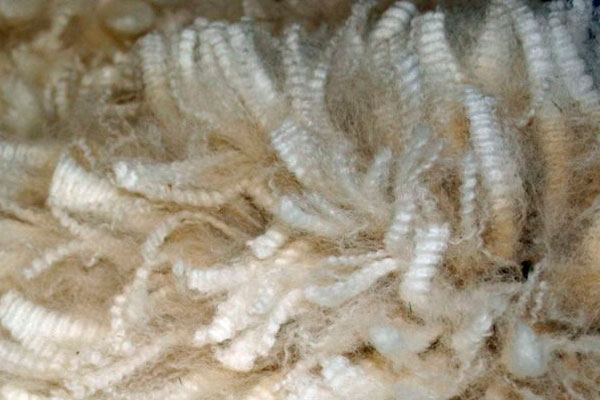
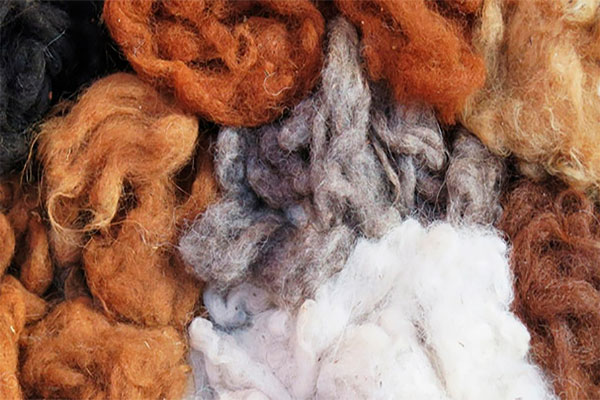
Unlike other luxurious natural fibres like cashmere, where the term refers to a certain quality of fibre, alpaca has a very wide range of qualities.
It is, therefore, appropriate to use the different grades of fibre for different purposes, the softest being the most sought after.
Therefore, the breeder’s job is partly to breed his animals to preserve or improve the quality and characteristics of the fibre.
| 🦙 Alpaca Fiber | 🦙 Category | 🦙 Microncount | 🦙 Fiber Length |
|---|---|---|---|
| Royal Alpaca | Ultra fine | 18 microns | 60 mm |
| Baby Alpaca | Fine | 19-23 microns | 60-70 mm |
| Fine Alpaca | Medium | 23-28 microns | 65-75 mm |
| Medium Alpaca | Medium | less then 30 microns | 65-75 mm |
| Strong Alpaca | Coarse | more microns | 65-75 mm |
Shearing and care of the alpaca
The alpaca is sheared only once a year, at the beginning of spring (usually in May), to avoid that the animal gets too hot in the summer (and to avoid heat strokes which can be fatal), but also to give the fibre time to grow back for the fall and the cooler weather.
This shearing is essential to the animal’s well-being and is done without hurting it.
It is done with the animal lying on a mat or a shearing table, with its legs tied to prevent it from moving and injuring itself.
Breeder shears by sections put in different bags to better separate the qualities according to the part of the animal’s body. This simplifies the sorting of the fibre and the fleeces later on.
Breeder often takes advantage of shearing to trim the hooves and teeth (which are constantly growing) as well as to cut the tips of the fighting teeth in males. The alpaca needs little regular veterinary care on a yearly basis, only a vaccine and deworming.
